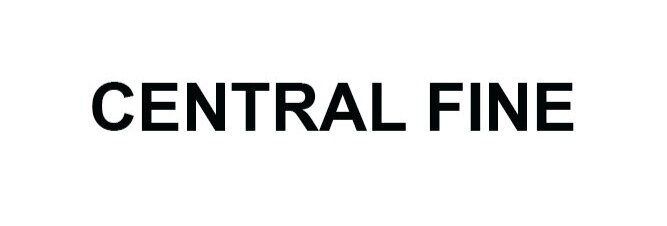ANDRE PIERRE
December 3rd, 2016 - March 30th, 2017
Opening December 3rd, from 7-9 PM
CENTRAL FINE presents an exhibition of paintings by André Pierre, curated by Tomm El-Saieh and Diego Singh. On view there will be a selection of historical works that aims to further the conversation on the place where the Symbolic, the Imaginary, and the Real meet.
André Pierre was born in Port-au-Prince, Haiti in 1916. An anecdote told by Emmanuel El-Saieh narrates a traumatic moment or perhaps an epiphany: Pierre wrestled from a pig a piece of sugarcane to feed himself. This moment underlines an engagement with his own drive and the animal’s. It could perhaps be thought of as the Lacanian “lightning” where things become clear and actualized in consciousness as if by lightning, ultimately modifying one’s life. Shortly after, Pierre became a farmer, a painter and a voodoo priest, and perhaps understood the site where the human, hunger, and the divine merge—through libidinal sublimation.
Pierre’s first steps into painting took place within the voodoo temples; his early works were painted in the gourds and used to contain the offerings/ feedings/ sacrifices to the loa1 . These works were seen by Maya Deren2 who introduced him to the Centre d’Art in the late 40s. Following her suggestion, Pierre began painting on canvas and board, which perhaps indicates a passage from the devotional nature of his practice to a market conscious output.
When approaching Pierre’s works we encounter narratives that are embodied by deities, for a lack of a better word, or what is brought forward as these stories cut through the threshold of “the Real”. In one work, a mermaid-like figure (La Sirene) is seen as a sign announcing a flood, a political scene and a fight. The painting acts as an incantation where the artist conjures a spell, piercing a veil, presenting a work that acts as a rite and as a representation. (This twofold aspect indicates the shared nature of representation and the ritual: both invoke and re-attach through form and language, the real and the symbolic.) When considering these works, one wonders if Pierre saw the religious and the political as the same.
Going back to the loa, it is important to understand that the loa are not deities per-se, but rather can be understood as shadows or projections broadcasting their qualities onto this plane. These projections interact with humans, embodying virtues, tasks, and desires. The priest, like the painter, is perhaps the manager of both realms, re-linking them. This is key to understanding André Pierre’s work: through painting he brings forward the avatars of the divine into the reality of Haiti and its political landscape, confusing them and populating the shrine and the battlefield with metaphors and spells.
André Pierre’s reality was informed and formed by voodoo, and what we see in his paintings is an interaction between “the symbolic” and “the imaginary” (representation and language) through re-presentations that shape his painting practice and his work as a priest. The ‘passage to act’, and to the act of painting, in Pierre’s work evolves into a moment where the symbolic realm is that which informs, while becoming an image, a reality. This circular relationship is often addressed when talking about magical thinking. The tendency towards a trafficking of signs, towards repetition and codification present in Haitian painting and in Pierre’s works seems to address not only formal tactics and traditions but also the tempo that defines a trance and a rite. Such rhythm is the very site where narratives become acts.
What is of interest to me is that the focus in Pierre’s work appears to reside on intention; and this is what defines the magician. Pierre, perhaps, experienced intention as a site, and in that ‘place’ a color will invoke an effect, a spell, or point to a political structure. In the
works presented in this exhibition, André Pierre’s language and gaze seem to be delivering a living script that is defined by the same
threshold that this enactment is constantly crossing.
Diego Singh, Miami; October 25, 2016.
Andre Pierre was born in Port-au-Prince, Haiti in 1916; he died in 2005 at his home in Croix-des-Missions. His works focus on the representation of loa, or deities in the voodoo pantheon. He painted at the Issa El-Saieh gallery in Port-au-Prince for over 21 years, eventually becoming a houngan (a male voodoo priest) and dedicating his life to painting and to the presentation of voodoo as a legitimate religion. He is considered one of Haiti’s most significant painters and a successor of Hector Hyppolite, as a major painter of the loa. His work has been exhibited internationally in various museums, most recently at the Fowler Museum, University of California, Los Angeles and El-Saieh Gallery in Port-au-Prince.
CENTRAL FINE thanks Tomm El-Saieh, Sharona Nathan El-Saieh and Emmanuel El-Saieh for their guidance on this exhibition.
1 loa: the mysteries, or the invisibles in Haitian voodoo. They act as links between god and man. Unlike Catholic saints, not only revered but also served and offered food and sacrifices, respecting their culinary or chromatic preferences. As such, they are close to humans, and perhaps can be understood as projections. The loa were syncretized with the catholic saints by the Fon and the Iwi and in some instances Catholic saints have become loa; this is the case of John the Baptist.
2 Le Centre d’Art was founded in 1944 in Port-au-Prince. It has been an educational center and a reference for the presentation of Haitian art. In January 12, 2010, Le Centre d’Art’s building collapsed. After the collapse of the building and the death of its director, the site remained closed for four years. Le Centre d’Art reopened in 2014 and remains open.











